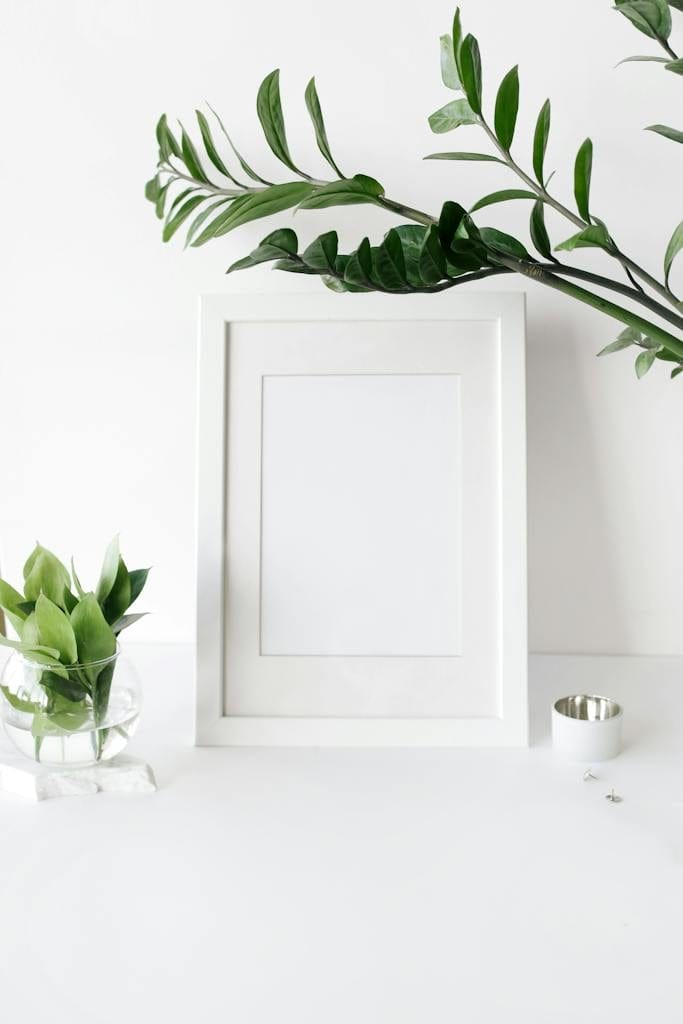What is Rue Plant: Characteristics, Uses, and Benefits in 2024
What makes the rue plant a hidden gem in the world of herbs, and what secrets does it hold for us to uncover?
With its intriguing blend of ancient allure and contemporary relevance, rue plants intrigue us with their distinctive qualities.
Join us as we dissect the characteristics, explore the practical applications, and reveal the surprising benefits of this enigmatic herb. Are you ready to unravel the mysteries of the rue plant and its potential impact on your culinary and medicinal adventures?
Key Takeaways
- Rue plant has distinctive blue-green leaves and yellow flowers, with a bitter taste and bittersweet fragrance.
- Rue plant holds cultural and historical significance as the ‘Herb of Grace’ with religious symbolism.
- Rue plant offers medicinal properties like aiding digestion and anti-inflammatory effects, but requires caution in usage.
- Rue plant is practical in gardening for pest control, acting as a natural insect repellent and deer-resistant plant.
Understanding the Characteristics of Rue Plant

Upon encountering the rue plant, one immediately notices its distinctive blue-green leaves and vibrant yellow flowers. The bitter taste of the rue plant, stemming from compounds like Rutin, adds a unique flavor profile that sets it apart in the herb world.
Despite the potential for dermatitis reactions when handling rue, its rich history and versatile uses continue to captivate herb enthusiasts and chefs alike. The combination of its unique characteristics, from the blue-green leaves to the vibrant yellow flowers, make rue a standout herb worth exploring further.
Exploring the Cultural and Historical Significance of Rue Plant

After exploring the distinctive characteristics and culinary uses of the rue plant, it’s intriguing to investigate its cultural and historical significance, shedding light on the herb’s symbolic roles and ancient connections.
- Herb of Grace: Rue has been commonly referred to as the ‘Herb of Grace’ due to its association with virtues like repentance and purification in various religious practices.
- Pliny the Elder: The renowned Roman naturalist, Pliny the Elder, documented rue in his works, recognizing its medicinal properties and cultural importance in ancient times.
- Religious Symbolism: Rue holds religious symbolism in Christianity, Judaism, and Wiccan traditions, symbolizing concepts such as protection, clarity, and healing.
- Cultural Significance: Over centuries, rue has been integrated into different cultures worldwide, featuring in rituals, superstitions, and traditional medicine practices, reflecting its enduring cultural significance and versatility.
The rue plant’s role as the ‘Herb of Grace’ and its mentions by influential figures like Pliny the Elder underscore its deep-rooted historical and cultural importance. Its symbolic meanings in various religions and folklore, alongside its utilization in ancient medicine, showcase the herb’s multifaceted significance throughout human history.
The Medicinal Properties of Rue Plant: Benefits and Risks

Exploring the medicinal properties of the rue plant reveals a spectrum of health benefits and potential risks associated with its usage. Rue, known for its historical use as a medicinal herb, offers a range of therapeutic effects attributed to compounds like acridone alkaloids.
These alkaloids play an important role in rue’s ability to aid digestion, alleviate muscle spasms, and act as an anti-inflammatory agent.
However, alongside its benefits, rue comes with risks that must be considered. Contact dermatitis is a common adverse reaction associated with handling rue due to the plant’s oils, which can cause skin irritation upon contact.
The Practical Uses of Rue Plant in Gardening and Pest Control

Discovering the practical uses of the rue plant in gardening and pest control enhances the functionality of this versatile herb beyond its culinary and medicinal applications. Rue, a perennial herb, offers various benefits in gardening and pest management:
- Growing Rue Plant: Rue is relatively easy to grow, preferring well-drained soil and full sun. It can thrive in various climates, making it a versatile addition to any garden.
- Rue as a Host Plant: Rue serves as a host plant for beneficial insects like ladybugs and lacewings. By attracting these insects, rue contributes to a healthier ecosystem in your garden.
- Rue Plant as an Insect Repellent: The strong fragrance of rue acts as a natural insect repellent, deterring pests like aphids and beetles. Planting rue near susceptible crops can help protect them from insect damage.
- The Deterrent Effect on Deer: Rue is known to be a deer-resistant plant due to its bitter taste and strong scent. This quality makes it a valuable addition to gardens in areas where deer browsing is a concern.
>Are There Any Similar Benefits or Uses Between Rue Plant and Guanabana Tree?
Yes, there are similar benefits between Rue plant and Guanabana tree. Both have been used for their medicinal properties for centuries. Rue is valued for its anti-inflammatory and anti-spasmodic properties, while Guanabana tree is renowned for its anti-cancer and anti-parasitic attributes. Consider planting soursop tree in 2024 for its potential health benefits.
The Safe Usage of Rue Plant: Guidelines and Precautions

Having explored the practical uses of rue plant in gardening and pest control, it’s essential to understand the guidelines and precautions for its safe usage. When handling rue, it’s important to be aware of its potential to cause dermatitis reactions, especially when in contact with the blue-green volatile oil found in its leaves.
To avoid adverse skin reactions, it’s recommended to wear gloves while working with rue and wash hands thoroughly after contact.
Regarding ingestion, rue should only be consumed in small amounts due to its potential toxicity. The dried leaves of the rue plant are commonly used in culinary dishes for their unique flavor, but care must be taken to make sure that only a minimal quantity is used to prevent any harmful effects. If rue plant poisoning is suspected.
Conclusion
The rue plant’s rich history, unique flavors, and medicinal properties make it a fascinating herb to explore. From its cultural significance to its practical uses in gardening and pest control, rue offers a blend of traditional and modern benefits.
While caution is advised when handling this herb, the allure of its bittersweet fragrance and enduring presence continues to captivate herb enthusiasts and chefs alike. Embracing the rue plant reveals a world of possibilities waiting to be discovered.
Frequently Asked Questions
what is rue plant Used For?
Rue is used for a variety of purposes, including culinary, medicinal, and insect-repelling applications. Its bitter taste and aromatic fragrance make it a valuable ingredient in cooking, especially in Mediterranean and Roman cuisine.
Medicinally, rue has been utilized to stimulate menstruation, combat indigestion, and potentially even treat cancer due to its unique properties.
Additionally, the plant’s leaves are commonly used as insect repellents and in bouquets, showcasing its versatility.
How Do You Harvest and Use Rue?
When harvesting and using rue, it’s essential to gather the leaves before flowering for the best flavor. Incorporate fresh leaves in salads, marinades, or as a garnish to enhance dishes with a bitter and aromatic touch.
Drying rue leaves in a well-ventilated spot helps preserve their flavor for future culinary adventures. Infusing dried leaves in hot water creates a herbal tea that may aid digestion or ease menstrual discomfort.
Experimenting with rue in spice blends, sauces, or stews reveals its unique and pungent flavor profile.
How Do You Use Rue for Arthritis?
When using rue for arthritis, its anti-inflammatory properties, like rutin and quercetin, may help alleviate joint pain and inflammation.
Rue can be consumed as a tea, infusion, or in capsule form to potentially benefit those with arthritis. However, consulting a healthcare professional is essential to determine the right dosage for safe utilization.
Rue’s traditional use as an herbal remedy for arthritis suggests promising relief and improved mobility for individuals seeking natural alternatives.
Can You Touch Rue Plant?
Yes, you can touch the rue plant, but caution is advised due to its potential to cause contact dermatitis in some people. Rue contains oils and compounds that may irritate the skin upon contact, especially on hot and humid days.
While reactions are usually mild, they can be more severe in sensitive individuals. Those with skin sensitivities or allergies should avoid direct contact with rue to prevent any adverse effects.







